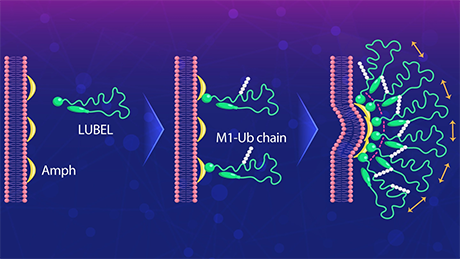Life Science and Technology News
Lost in Translation: How "Risky" Amino Acids Abort Elongation in Protein Synthesis
Elongation, a crucial step in the translation process of protein synthesis, gets disrupted by amino acid sequences with an abundance of N-terminal aspartic and glutamic acid residues in eukaryotic cells, discovered researchers from Tokyo Tech and University of Hyogo. The team's findings show that these "risky" amino acids can destabilize the ribosomal machinery. As a consequence, most proteomes tend to avoid incorporating them at the N-terminals of peptide sequences, indicating a bias in amino acid distribution.

Life depends on the precise functioning of several proteins synthesized in cells by ribosomes. This diverse set of proteins, known as a proteome, is maintained by the robust translation elongation of amino acid sequences taking place in the ribosomes. The translation mechanisms which ensure that nascent chains of polypeptides—long chains of amino acids—are elongated without getting detached are conserved in all living organisms. However, the rates of elongation are not constant. Elongation is often interrupted by interactions between positively charged nascent polypeptides and negatively charged ribosomal RNA.
Studies have found that in prokaryotic Escherichia coli cells, the nascent peptide chains not only disrupt the elongation process but destabilize the ribosomes themselves. This type of premature termination of translation is called intrinsic ribosome destabilization (IRD). Evidence shows that IRD was mainly triggered by nascent peptides with N-terminals rich in aspartic and glutamic acid sequences. Since translation mechanisms are conserved, researchers began to wonder if a similar phenomenon could be seen in the cells of eukaryotic organisms, such as plants, fungi, and animals.
Recently, a team of researchers from Japan, led by Prof Hideki Taguchi from Tokyo Institute of Technology (Tokyo Tech), were successful in providing some answers to this question. In their recent study published in Nature Communications![]() , the team using budding yeast cells and a reconstituted cell-free translation system to investigate the IRD phenomenon in eukaryotes. "Previous studies have explored the impact of aspartic acid and glutamic acid sequences on bacterial ribosomal translation. However, not much is about eukaryotic cells. So, we chose a eukaryotic organism like yeast to investigate the premature termination of translation and if there were any mechanisms present to counter IRD," explains Prof. Taguchi, one of the corresponding authors of the study.
, the team using budding yeast cells and a reconstituted cell-free translation system to investigate the IRD phenomenon in eukaryotes. "Previous studies have explored the impact of aspartic acid and glutamic acid sequences on bacterial ribosomal translation. However, not much is about eukaryotic cells. So, we chose a eukaryotic organism like yeast to investigate the premature termination of translation and if there were any mechanisms present to counter IRD," explains Prof. Taguchi, one of the corresponding authors of the study.
The team discovered that similar to bacteria, nascent peptide chains enriched in aspartic acid (D) or glutamic acid (E) in their N-terminal regions led to abortion of translation in the yeast cells by IRD. They also found that the accumulation of the peptidyl-tRNAs inhibited the cell growth in yeast lacking peptidyl-tRNA hydrolase, an essential cellular enzyme. "The peptidyl-tRNAs produced by IRD are cleaved by peptidyl-tRNA hydrolase, which recycles the peptidyl-tRNAs outside the ribosome complex. The accumulation of these abortive peptidyl-tRNAs is toxic, since yeast lacking the enzyme cannot grow when IRD-prone sequences are overexpressed," Prof. Taguchi says.
The bioinformatics analysis carried out by the team, however, revealed a unique way yeast cells reduce the risk of IRD. They found that the proteomes had a biased amino acid distribution, where the translation elongation process disfavored the amino acid sequences with D/E runs in their N-terminal region.
This study provides novel insights into the elongation dynamics of eukaryotic cells and the counteracting mechanisms in place to reduce translation defects during protein synthesis. "Understanding the factors that affect overall amino acid usage in proteomes can help us improve the expression of recombinant proteins. This is essential for the production of useful proteins that can have clinical and industrial applications," concludes Prof. Taguchi.
- Reference
| Authors : | Yosuke Ito1, Yuhei Chadani2, Tatsuya Niwa1,2, Ayako Yamakawa1, Kodai Machida3, Hiroaki Imataka3, Hideki Taguchi1,2 |
|---|---|
| Title : | Nascent peptide-induced translation discontinuation in eukaryotes impacts biased amino acid usage in proteomes |
| Journal : | Nature Communications |
| DOI : | 10.1038/s41467-022-35156-x |
| Affiliations : | 1School of Life Science and Technology, Tokyo Institute of Technology, Japan 2Cell Biology Center, Institute of Innovative Research, Tokyo Institute of Technology, Japan 3Graduate School of Engineering, University of Hyogo, Japan |
| * Corresponding authors' emails: | ychadani@bio.titech.ac.jp; taguchi@bio.titech.ac.jp |
- Nascent Polypeptides Stabilize Ribosomes for Uninterrupted Translation, Tokyo Tech Scientists Show │Life Science and Technology News
- How understanding the dynamics of yeast prions can shed light on neurodegenerative diseases │Life Science and Technology News
- Protein intentionally terminates own synthesis by destabilizing synthesis machinery — the ribosome │Life Science and Technology News
- New insights into Protein Synthesis | Tokyo Tech News
- Hideki Taguchi - Chaperones supporting protein life cycles | Research Stories | Research
- Taguchi Lab
- Hideki Taguchi | Researcher Finder - Tokyo Tech STAR Search
- Yuhei Chadani | Researcher Finder - Tokyo Tech STAR Search
- Cell Biology Center, Institute of Innovative Research
- Institute of Innovative Research (IIR)
- Department of Life Science and Technology, School of Life Science and Technology
- University of Hyogo
- Latest Research News
School of Life Science and Technology
—Unravel the Complex and Diverse Phenomena of Life—
Information on School of Life Science and Technology inaugurated in April 2016
Further Information
Professor Hideki Taguchi
Cell Biology Center, Institute of Innovative Research, Tokyo Institute of Technology
Email taguchi@bio.titech.ac.jp






